Yes, Paso Cabs are becoming “toe to toe” with Napa. We may not yet have the number of wines, n or the price points, but certainly our best Cabernets can stand proudly next to Napa Cabernet Sauvignons in blind tastings. And they are judged to be in equivalent ranges of quality. Single vineyard, terroir driven, hillside Cabernets from Paso are identified in blind tastings as being hillside Cabernets from Napa! (e.g., 2012 The Farm Winery LPF in Judgment of Paso 2016; 2012 The Farm Winery Cardinal, as judged by Fred Dame 2017.) Other Cabernets, blended from different sources, compare honorably to their equivalents from further North. Paso Robles Cabernet Sauvignon has come of age.
or the price points, but certainly our best Cabernets can stand proudly next to Napa Cabernet Sauvignons in blind tastings. And they are judged to be in equivalent ranges of quality. Single vineyard, terroir driven, hillside Cabernets from Paso are identified in blind tastings as being hillside Cabernets from Napa! (e.g., 2012 The Farm Winery LPF in Judgment of Paso 2016; 2012 The Farm Winery Cardinal, as judged by Fred Dame 2017.) Other Cabernets, blended from different sources, compare honorably to their equivalents from further North. Paso Robles Cabernet Sauvignon has come of age.
Our Cabs have phenomenal and distinctive phenolics, but I like to find arguments more in the poetry of the land, the subsoil and the climate than in chemistry because the land, the soil and the climate are seductive. And seduction is the ultimate attractor. In a world that craves originality, the only source of originality is the source; where the wine comes from.
Our ability to tell the stories of the land allows the consumer to identify attributes that are not only “in” the bottle, but also “around” the bottle. Knowing these stories allows the consumer to connect at many different levels with the wines and with its origin and its producers.
So, we need to talk about the limestone in our soils; almost omnipresent in Paso Robles, and not significant in the rest of California AVAs. We need to explain how that limestone results in finer tannin structures (here the phenolics show up!) that coat your mouth, cleansing your palate without strip-mining it.
Also due to the alkalinity of limestone soils, Paso grapes have at harvest lower pHs (higher acidity) that almost eliminate the need for tartaric corrections that are so prevalent in other warm winemaking areas like Napa. High natural acidity makes our Cabs fresh, drinkable and food friendly.
We need to talk about the day-night (diurnal) temperature excursion, the highest of all known wine-making areas (not only of CA, but of the world), and how that difference between night and day temps enhances the depth of color and the aromas in our Cabs.
We need to talk about how the greatest traffic problem of Paso is deer crossing the roads, and how the mind-set of Paso winemakers is influenced by their closeness to nature.
So, you see, there are stories that go beyond the numbers of chemistry and venture into the romance and the immense seduction of place. And these stories are uniquely Paso. They are our originality.
Abrazo!
Santiago Achaval
